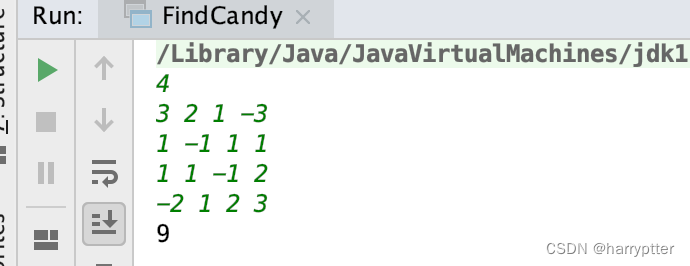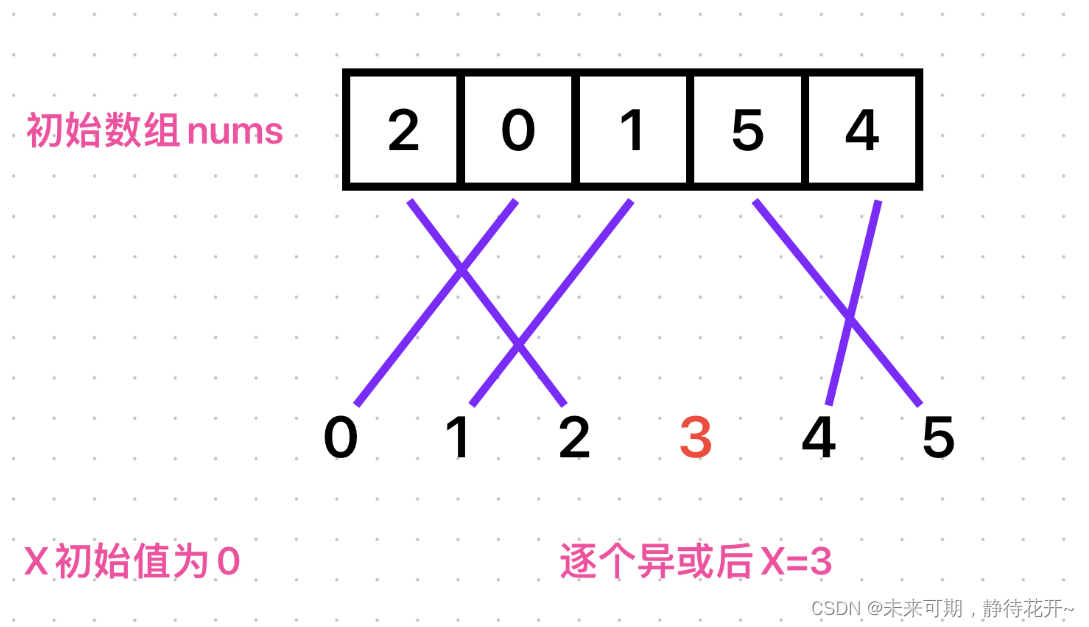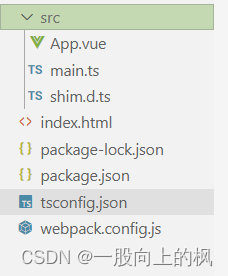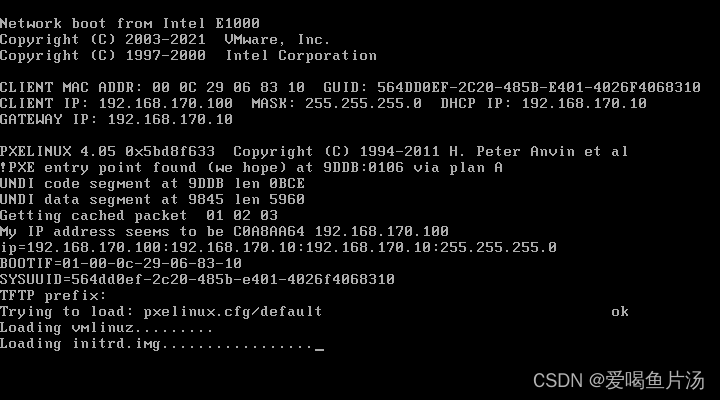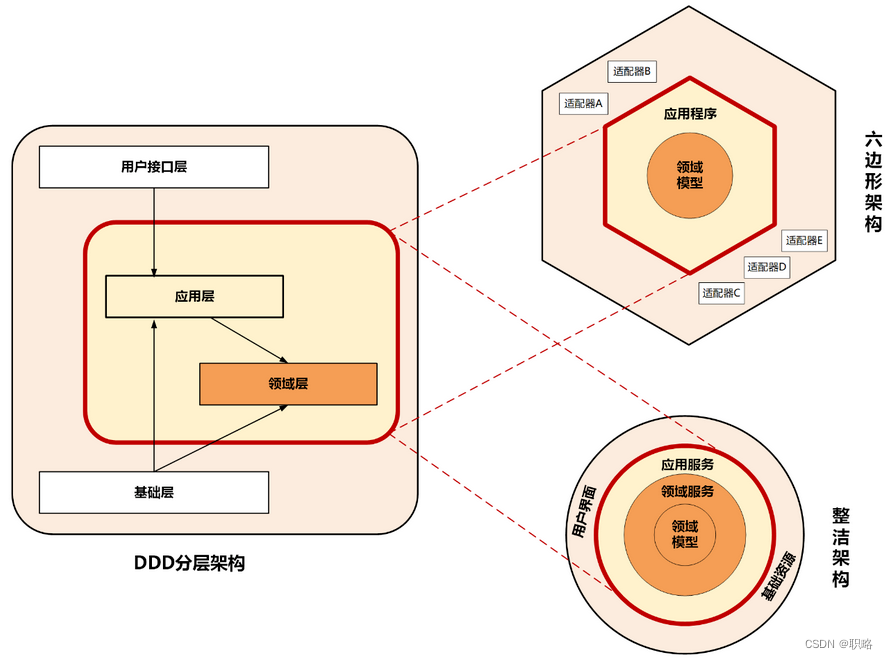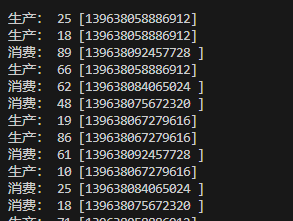题目:
宝宝和妈妈参加亲子游戏,在一个二维矩阵(N*N)的格子地图上,宝宝和妈妈抽签决定各自
的位置,地图上每个格子有不同的Q糖果数量,部分格子有障碍物。
游戏规则Q是妈妈必须在最短的时间(每个单位时间只能走一步)到达宝宝的位置,路上的
所有糖果都可以拿走,不能走障碍物的格子,只能上下左右走。
请问妈妈在最短到达宝宝位置的时间内最多拿到多少糖果(优先考虑最短时间到达的情况下尽
可能多拿糖果)。
输入描述
第一行输入为N, N标识二维矩阵的大小
之后N行,每行有N个值,表格矩阵每个位置的值
其中:
- 3:妈妈
- 2:宝宝
- 1:障碍
> =0:糖果数(0表示没有糖果,但是可以走)
输出描述
输出妈妈在最短到达宝宝位置的时间内最多拿到多少糖果,行末无多余空格
备注
地图最大50*50
示例1:
输入
4
3 2 1 -3
1 -1 1 1
1 1 -1 2
-2 1 2 3
输出
9
说明
此地图有两条最短路径Q可到宝宝位置, 都是最短路径6步,但先向下再向左可以拿到9个糖
果
示例2:
输入
4
3 2 1 -3
-1 -1 1 1
1 1 -1 2
-2 1 -1 3
输出
-1
说明
此地图妈妈无法到达宝宝位置
题解:
图求最短路径,采用BFS搜索,关于BFS,推荐观看:BFS广搜解决迷宫问题_哔哩哔哩_bilibili
看完基本就清楚BFS算法原理了。
这题里面因为有糖果数目,所以这边采用的方法是,如果下一步能走到终点,那么终点位置的visit[endx][endy]不设置为1.这样其他方案走到终点的话,也能加入进队列里面。但是由于队列里面取首元素是终点的话,那么就不会往下找了,所以,搜索记录的应该也都是比较短的路线。然后再依旧采用一个List记录到终点的步数,一个Map记录到终点的步数和糖果数的结果。最后找到最少的步数,对应的最多糖果数就可以了。
代码:
import java.util.*;
public class FindCandy {
public static void main(String[] args) {
Scanner sc = new Scanner(System.in);
int n = Integer.valueOf(sc.nextLine());
int nums[][] = new int[n][n];
int stratPosX = Integer.MIN_VALUE;
int stratPosY = Integer.MIN_VALUE;
int childPosX = Integer.MIN_VALUE;
int childPosY = Integer.MIN_VALUE;
int visited[][] = new int[n][n];
for (int i = 0; i < n; i++) {
String path[] = sc.nextLine().split(" ");
for (int j = 0; j < n; j++) {
visited[i][j] = 0;
nums[i][j] = Integer.valueOf(path[j]);
if (nums[i][j] == -3) {
stratPosX = i;
stratPosY = j;
visited[i][j] = 1;
}
if (nums[i][j] == -2) {
childPosX = i;
childPosY = j;
}
}
}
int[][] directions = {{-1, 0}, {0, -1}, {1, 0}, {0, 1}};
Queue<Steps> queue = new LinkedList<>();
Steps firstStep = new Steps(stratPosX, stratPosY, 0, 0);
visited[stratPosX][stratPosY] = 1;
Steps endStep = new Steps(childPosX, childPosY, 0, 0);
queue.offer(firstStep);
List<Integer> finalRoteSteps = new ArrayList<>();
Map<Integer, List<Integer>> stepCandyMap = new HashMap<>();
boolean hasRoote = false;
while (!queue.isEmpty()) {
Steps frontStep = ((LinkedList<Steps>) queue).getFirst();
if (frontStep.x == endStep.x && firstStep.y == endStep.y) {
hasRoote = true;
continue;
}
for (int i = 0; i < 4; i++) {
int newX = frontStep.x + directions[i][0];
int newY = frontStep.y + directions[i][1];
if (newX >= 0 && newX < n && newY >= 0 && newY < n && nums[newX][newY] != -1 && visited[newX][newY] == 0) {
// System.out.println("newX= " + newX + " newY " + newY + " candy " + nums[newX][newY]);
Steps nextStep = new Steps();
if (newX == endStep.x && newY == endStep.y) {
nextStep = new Steps(newX, newY, frontStep.getStep() + 1, frontStep.getCandy());
queue.offer(nextStep);
finalRoteSteps.add(nextStep.step);
List<Integer> candyList = stepCandyMap.containsKey(nextStep.step) ? stepCandyMap.get(nextStep.step) :
new ArrayList<>();
if (!candyList.contains(nextStep.candy)) {
candyList.add(nextStep.candy);
}
stepCandyMap.put(nextStep.step, candyList);
hasRoote = true;
} else {
nextStep = new Steps(newX, newY, frontStep.getStep() + 1, frontStep.getCandy() + nums[newX][newY]);
visited[newX][newY] = 1;
queue.offer(nextStep);
}
}
}
((LinkedList<Steps>) queue).pollFirst();
}
if (hasRoote) {
Collections.sort(finalRoteSteps);
List<Integer> candys = stepCandyMap.get(finalRoteSteps.get(0));
Collections.sort(candys);
System.out.println(candys.get(candys.size() - 1));
} else {
System.out.println(-1);
}
}
}
class Steps {
int x;
int y;
int step;
int candy;
public Steps() {
}
public Steps(int x, int y, int step, int candy) {
this.x = x;
this.y = y;
this.step = step;
this.candy = candy;
}
public int getX() {
return x;
}
public void setX(int x) {
this.x = x;
}
public int getY() {
return y;
}
public void setY(int y) {
this.y = y;
}
public int getStep() {
return step;
}
public void setStep(int step) {
this.step = step;
}
public int getCandy() {
return candy;
}
public void setCandy(int candy) {
this.candy = candy;
}
}
验证:

